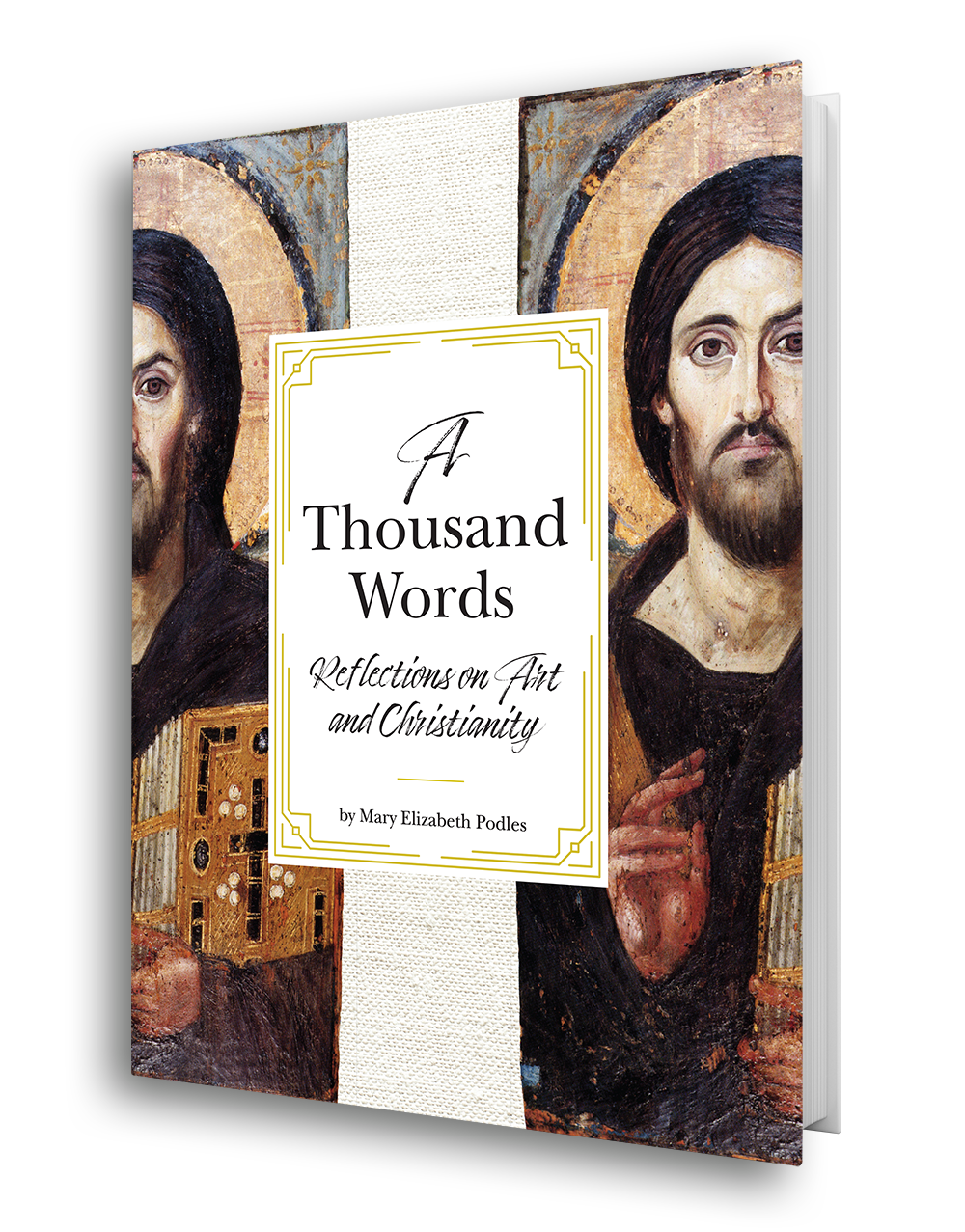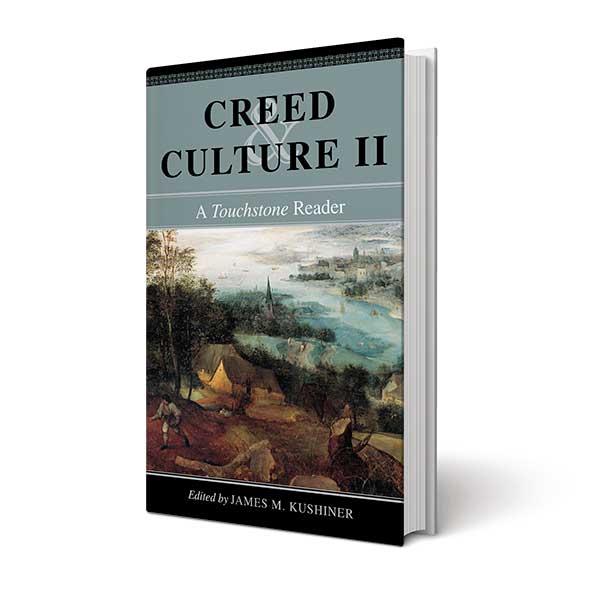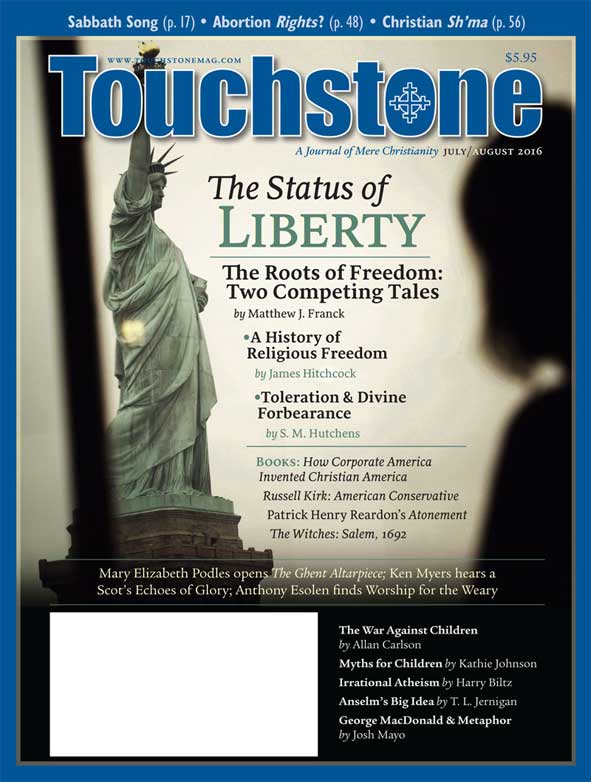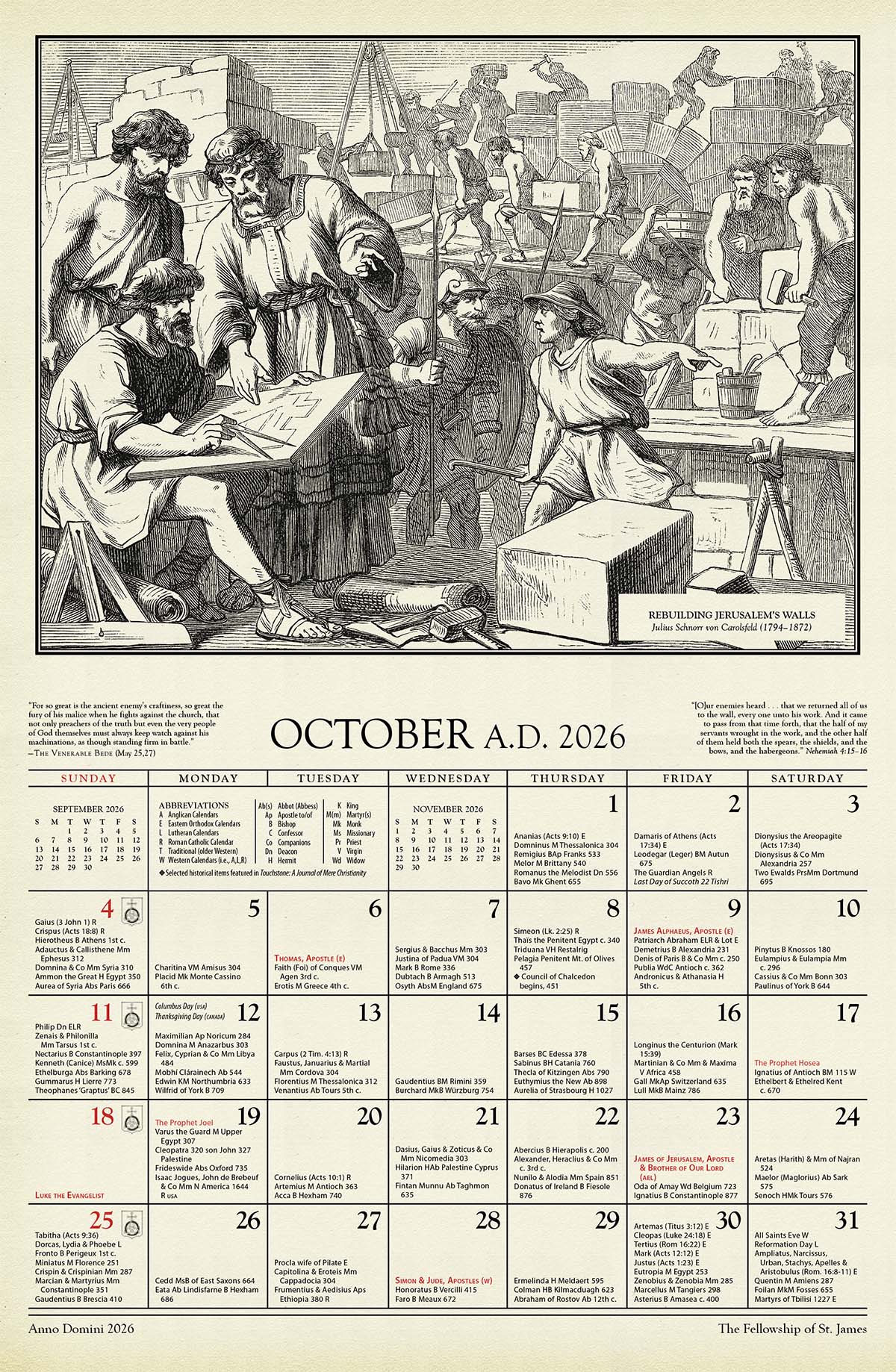childrens books First Books
First Myths by Kathie Johnson
Column: First Books
First Myths
by Kathie Johnson
Books on myths are a special genre. They tell exciting stories, sometimes scary, sometimes weird, sometimes romantic, sometimes heroic. They imagine how things came to be and why; they tell of creation and destruction, life and death. There is often an important lesson embedded in a myth, and any educated person needs to know the most common myths to understand cultural references.
Greek & Norse Myths
There are so many good books retelling the great myths, especially those of the Greeks and Norsemen, that it's hard to know where to begin. Perhaps the best-loved collection is D'Aulaires' Book of Greek Myths. Ingri and Edgar D'Aulaire are favorite authors of many homeschoolers for their biographies, and this is another book that they like. Across from the title page is a helpful "family tree," showing how at least some of the characters are related. Then, in short chapters, often with lovely, full-color illustrations, the stories of Zeus and Hera, Athena and Apollo, Hermes and Hades, and many more gods are told. There are also the stories of the mortal descendants of Zeus, including Heracles, Oedipus, and King Midas. These are rich tellings of the stories, but are not complex, so they are good for reading aloud. The D'Aulaires have written a similar book on the Norse myths, which tend to be fiercer than the Greek ones.
Another author well-liked by homeschoolers is Geraldine McCaughrean, who has done compilations of Roman and Greek myths. These are well told, with bright illustrations. Mary Pope Osborne, popular author of the Magic Treehouse books, has written Favorite Greek Myths, which uses lots of dialogue and has "frontispiece"-type illustrations at the beginning of each story. The ever-popular author Aliki has put together The Gods and Goddesses of Olympus. For each god, there is a half-page story, with a picture above the story and a full-page illustration on the opposite page. Beautiful.
Other Collections
Other good compilations of myths include Anthony Master's Roman Myths, with a picture on most pages. These stories are less well known and can be good for the child who has read lots of Greek myths. Neil Philip's The Illustrated Book of Myths (Dorling Kindersley) is wide-ranging and organized by topic: Creation Myths, Beginnings, Fertility and Cultivation, Gods and People, and so forth. These stories come from many cultures, including Sumerian, Iranian, Japanese, Siberian, Ashanti, and more, in addition to the Greek and Norse myths. There are lots of pictures and side-boxes with information explaining some of the objects, animals, and such mentioned in the stories.
Ann Pilling has written Realms of Gold, which includes legends as well as myths. There are fourteen stories representing almost as many cultures, and the pages have pictures around the edges. Anne Rockwell, who has written many fine books for younger children, has put together stories from the Greek myths in The Robber Baby. They are told in a personal way, with large print and simple illustrations. (The robber baby, by the way, is Hermes.) Moontellers, by Lynn Moroney, includes myths of the moon from many lands. The stories are told briefly, with information about the culture of the land each story comes from, and with a large, lovely picture of the people in moonlight. Stories from the Stars by Juliet Burke tells Greek myths of the Zodiac, which can then lead to good stargazing.
Individual Myths
Besides the collections, there are many wonderful individual myth tellings. Leonard Everett Fisher has written several myth stories, full of his dramatic illustrations, including Theseus and the Minotaur. Marianna Mayer does wonderful retellings of fairy tales and myths. Her Pegasus has dark, almost mystical illustrations. Shirley Climo (who is also well-known for her fairy-tale retellings) wrote Stolen Thunder, which tells the story of Thor and the frost giants, as well as Atalanta's Race. Both books are richly illustrated. Christopher Moore's Ishtar and Tammuz is a Babylonia myth of the seasons with brilliant illustrations. Deborah Nourse Lattimore (another well-regarded story-teller) has written Medusa, with a small amount of print surrounded by sweeping illustrations.
The story that is most often told in individual form is that of King Midas. Demi has written a lovely one, as has Charlotte Craft, whose book has especially rich pictures. Al Perkins also did one for the Cat-in-the-Hat beginner series.
For Younger Children
There are a few myth books written for younger children. The beloved picture-book author Rosemary Wells has done at least two using her favorite characters, Max and Ruby. The first book tells the Midas story, but instead of gold, the wish is for desserts (Max's favorite). The second, which tells the Pandora story, centers around a jewelry box. Two other good myth books in easy reading form are Jane Mason's The Flying Horse, on the story of Pegasus, and Stephanie Spinner's Monster in the Maze, which tells the story of the Minotaur.
For the next level up, Marc Cerasini has written The Twelve Labors of Hercules. And Capstone Press has published a series of single myths for the lower grade levels of reading, including books on Achilles, Mars, Poseidon, Venus, and Diana, among others. They are illustrated with paintings, sculptures, and photographs, and include maps and glossaries.
Reasons for Reading
These are only a sampling of the many children's books of myths that are available. But going back to the beginning—why encourage children to read myths in the first place? One reason is that they expand children's understanding of the cultures of the ancient civilizations from which they spring. The Greek myths, especially, are a major source of Western art and literature. The great art works in our museums would be hard to understand and appreciate without knowing the myths on which so many paintings are based.
As for myself, I find that after I have read a group of myths, which are so often full of gods who are jealous and petty and angry and revengeful, I am particularly delighted to come back to my understanding of the world as created and maintained by the just and loving God of the Bible.
Kathie Johnson has always had a love for children's books. She collected many as a teacher and began sharing them with other teachers. In 1986, she opened a children's library in her home, and it has continued to expand over the years. Many home-schooled and schooled children borrow books from it, and she takes great pleasure in finding the "right" book for a child. She attends First Presbyterian Church in Berkeley.
Order
Print/Online Subscription
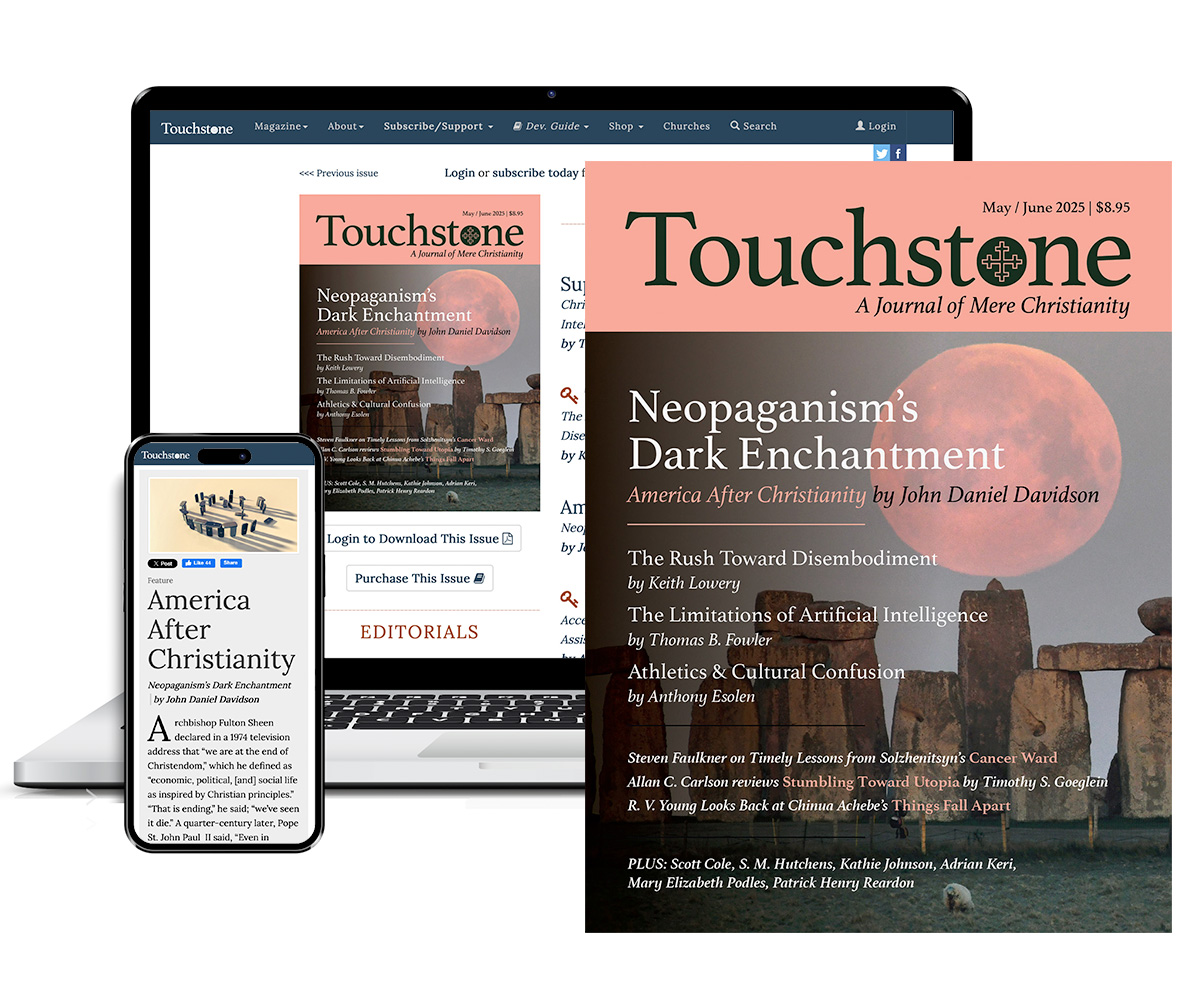
Get six issues (one year) of Touchstone PLUS
full online access including pdf downloads for only $39.95. That's only $3.34 per month!
Order
Online Only
Subscription

Get a one-year full-access subscription to the Touchstone
online archives for only $19.95. That's only $1.66 per month!
Order Touchstone subscriptions in bulk and save $10 per sub! Each subscription includes 6 issues of Touchstone plus full online access to touchstonemag.com—including archives, videos, and pdf downloads of recent issues for only $29.95 each! Great for churches or study groups.
Transactions will be processed on a secure server.
more from the online archives

33.4—July/August 2020
Dwelling in Unity
Our Views on the President Are Not Crucial by S. M. Hutchens

31.5—September/October 2018
Pastoral Realism
on the Congregation as a Wilderness by Paul Gregory Alms

24.1—January/February 2011
Secular Grendel
Ruminations on the Monstrous Envy of the Soul-Devouring State by Anthony Esolen
calling all readers
Please Donate
"There are magazines worth reading but few worth saving . . . Touchstone is just such a magazine."
—Alice von Hildebrand
"Here we do not concede one square millimeter of territory to falsehood, folly, contemporary sentimentality, or fashion. We speak the truth, and let God be our judge. . . . Touchstone is the one committedly Christian conservative journal."
—Anthony Esolen, Touchstone senior editor
Support Touchstone
00



